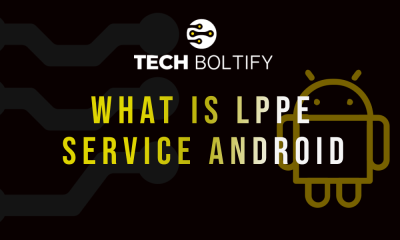Tech
How to Improve an Essay: Practical Fixes That Make a Big Impact
A brilliant idea means little if it’s hidden beneath clunky sentences, vague arguments, or disorganized paragraphs. Even the strongest points can get lost if the essay lacks clarity and structure. That’s why refining your drafts is just as important as writing them in the first place. Polishing your work helps deliver your message with more confidence and academic impact.
EssayService is a platform designed to support students through the writing process, offering resources and expert help when it’s most needed. In this guide, its experts share practical advice based on real challenges students face—helping you figure out how to write better essays, one smart edit at a time.
How to Get Better at Writing: Small Habits, Big Results
No one becomes a skilled writer overnight—even professionals start out writing awkward sentences and messy drafts. Improvement takes time, and the path to stronger essays is paved with daily habits and reflection.
Writing regularly, even for just 15 minutes a day, builds confidence and makes words flow more naturally. Pair this with wide reading—books, articles, and essays alike—to develop a sharper eye for structure, tone, and vocabulary. Pay attention to how others build arguments or tell compelling stories.
Feedback is equally essential. Share your work, listen to critiques, and revise without fear. This is where real progress happens.
A simple way to begin? Try journaling, blogging, or freewriting—anything that gets your ideas moving. And if you’re stuck or need guidance, EssayService is ready to support students with expert help on writing assignments, no matter where you are in your writing journey.
Smart Fixes That Instantly Improve Your Essay
Sharpen Your Thesis Before You Hit Submit
The thesis is the foundation of your entire argument—it tells readers exactly what your main point is and sets the tone for everything that follows. Without a strong thesis, the rest of your essay can feel scattered or unclear.
One common mistake students make while writing an essay is shifting their focus mid-draft but forgetting to revise the thesis. For example, a vague thesis like “Social media affects people” can be sharpened into “Social media influences teen mental health by increasing comparison anxiety.”
Tip: Once your draft is done, re-read your thesis. Does it still reflect the argument you ended up making? If not, adjust accordingly.
Essay Structure That Keeps Your Reader Hooked
Think about it like this: if your essay doesn’t have flow, it’s like a boring TikTok video—professors won’t stick with it. A strong essay structure helps hold attention from start to finish.
Start with a clear introduction, then guide your reader through well-organized body paragraphs, and wrap it up with a focused conclusion. Each paragraph should revolve around a single idea.
Use topic sentences like road signs—they help readers know where you’re headed. Add transitions like “However” or “For example” to create smooth connections between thoughts. A strong structure isn’t just academic—it’s what keeps your ideas readable and engaging.
Cut the Fluff, Keep the Focus
When reviewing your draft, ask yourself: does each paragraph clearly support your thesis? If the answer is no, it’s time to revise. Essays thrive on clarity and purpose.
Trim the excess—cut filler phrases, ditch vague points, and replace generalizations with facts, stats, or credible quotes. Readers and professors don’t want empty words; they want content that matters.
A great tip for refining your essay writing format: annotate each paragraph by jotting its main point in the margin. If you can’t identify one, that section may need a rewrite or a stronger focus to stay aligned with your core argument.
Clarity Over Complexity Every Time
It’s tempting to fall back on academic buzzwords or robotic phrasing to sound “smart,” but simplicity wins. Clear writing shows real understanding.
Use the active voice, choose specific verbs, and vary sentence lengths to keep your writing lively and sharp. If a sentence sounds clunky when read aloud, it probably needs revision.
Here’s a pro move: swap out tired words like “thing,” “nice,” or “good” for stronger alternatives. It boosts clarity and helps your writing stand out. These are essential habits for anyone learning how to write a good essay—because good writing is thoughtful, not just wordy.
Edit Like a Pro, Not in a Rush
Effective editing goes far beyond spellcheck. It happens in layers: start with big-picture content, then move to structure, followed by grammar and style.
AI tools can help, but don’t rely on them alone. They often miss tone, clarity, or subtle phrasing errors. That’s why human insight still matters.
For students looking for feedback or polish, EssayService offers professional writing, editing, and proofreading by experienced academic editors. If you’ve read EssayService reviews, you’ll know it’s a trusted option when you’re stuck or short on time.
Editing is where the real magic happens—and it’s the final step in shaping the structure of an essay that actually works.
Close Strong: Don’t Let Your Conclusion Fall Flat
It’s easy to rush the ending, but your conclusion is the last thing your reader sees—make it count. Even if earlier sections weren’t perfect, a powerful close can tie everything together.
Restate your thesis, but add new weight to it—don’t just copy what you wrote in the intro. Show how your points add up.
End with something memorable: a fresh insight, a real-world takeaway, or a forward-looking idea. One of the often-overlooked steps to writing an essay is learning how to leave a lasting impression—and a strong conclusion does exactly that.
Essay Writing: Push Past “Good Enough”
Improving your essays isn’t about perfection—it’s about building a skill over time. The more you practice, the more natural it becomes.
Many students lose marks not for bad ideas but because their execution is weak or unfocused.
Don’t settle for just finishing the assignment. Aim higher. Let your essay reflect how much effort you’ve put in—and make every word count.
Tech
How To Bridge Front-End Design And Backend Functionality With Smarter API Strategy
Introduction: Building More Than Just Screens
We’ve all seen apps that look sharp but crumble the moment users push beyond the basics. A flawless interface without strong connections underneath is like a bridge built for looks but not for weight. That’s why APIs sit at the heart of modern software. They don’t just move data; they set the rules for how design and logic cooperate. When APIs are clear, tested, and secure, the front-end feels smooth, and the backend stays reliable.
The reality is that designing those connections isn’t just “coding.” It’s product thinking. Developers have to consider user flows, performance, and future scale. It’s about more than endpoints; it’s about creating a system that’s flexible yet stable. That mindset also means knowing when to bring in a full-stack team that already has the tools, patterns, and experience to move fast without cutting corners.
Here’s where you should check Uruit’s website. By focusing on robust API strategy and integration, teams gain the edge to deliver features user’s trust. In this article, we’ll unpack how to think like a product engineer, why APIs are the real bridge between design and functionality, and when it makes sense to call in expert support for secure, scalable development.
How To Define An API Strategy That Supports Product Goals
You need an API plan tied to what the product must do. Start with user journeys and map data needs. Keep endpoints small and predictable. Use versioning from day one so changes don’t break clients. Document behavior clearly and keep examples short. Design for errors — clients will expect consistent messages and codes. Build simple contracts that both front-end and backend teams agree on. Run small integration tests that mimic real flows, not just happy paths. Automate tests and include them in CI. Keep latency in mind; slow APIs kill UX. Think about security early: auth, rate limits, and input checks. Monitor the API in production and set alerts for key failures. Iterate the API based on real use, not guesses. Keep backward compatibility where possible. Make the API easy to mock for front-end developers. Celebrate small wins when a new endpoint behaves as promised.
- Map user journeys to API endpoints.
- Use semantic versioning for breaking changes.
- Provide simple, copy-paste examples for developers.
- Automate integration tests in CI.
- Monitor response times and error rates.
What To Do When Front-End and Backend Teams Don’t Speak the Same Language
It happens. Designers think in pixels, engineers think in data. Your job is to make a shared language. Start by writing small API contracts in plain text. Run a short workshop to align on fields, types, and error handling. Give front-end teams mocked endpoints to work against while the backend is built. Use contract tests to ensure the real API matches the mock. Keep communication frequent and focused — short syncs beat long meetings. Share acceptance criteria for features in user-story form. Track integration issues in a single list so nothing gets lost. If you find repeated mismatches, freeze the contract and iterate carefully. Teach both teams basic testing so they can verify work quickly. Keep the feedback loop tight and friendly; blame only the problem, not people.
- Create plain-language API contracts.
- Provide mocked endpoints for front-end use.
- Contract tests between teams.
- Hold short, recurring integration syncs.
- Keep a single backlog for integration bugs.
Why You Should Think Like a Product Engineer, Not Just A Coder
Thinking like a product engineer changes priorities. You care about outcomes: conversion, help clicks, retention. That shifts API choices — you favor reliability and clear errors over fancy features. You design endpoints for real flows, not theoretical ones. You measure impact: did a change reduce load time or drop errors? You plan rollouts that let you test with a small cohort first. You treat security, observability, and recoverability as product features. You ask hard questions: what happens if this service fails? How will the UI show partial data? You choose trade-offs that help users, not just satisfy a design spec. That mindset also tells you when to hire outside help: when speed, scale, or compliance exceeds your team’s current reach. A partner can bring patterns, reusable components, and a proven process to get you shipping faster with less risk.
- Prioritize outcomes over features.
- Measure the user impact of API changes.
- Treat observability and recovery as product features.
- Plan gradual rollouts and feature flags.
- Know when to add external expertise.
How We Help and What to Do Next
We stand with teams that want fewer surprises and faster launches. We help define API strategy, write clear contracts, and build secure, testable endpoints that front-end teams can rely on. We also mentor teams to run their own contract tests and monitoring. If you want a quick start, map one critical user flow, and we’ll help you design the API contract for it. If you prefer to scale, we can join as an extended team and help ship several flows in parallel. We stick to plain language, measurable goals, and steady progress.
- Pick one key user flow to stabilize first.
- Create a minimal API contract and mock it.
- Add contract tests and CI guards.
- Monitor once live and iterate weekly.
- Consider partnering for larger-scale or compliance needs.
Ready To Move Forward?
We’re ready to work with you to make design and engineering speak the same language. Let’s focus on one flow, make it reliable, and then expand. You’ll get fewer regressions, faster sprints, and happier users. If you want to reduce risk and ship with confidence, reach out, and we’ll map the first steps together.
Tech
Which SEO Services Are Actually Worth Outsourcing? Let’s Talk Real-World Wins
Okay, raise your hand if you thought SEO just meant stuffing keywords into blog posts and calling it a day. (Don’t worry, we’ve all been there.) Running a business comes with enough hats already, and when it comes to digital stuff, there’s only so much you can do on your own before your brain starts melting. The world of SEO moves quick, gets technical fast, and—honestly—a lot of it’s best left to the pros. Not everything, but definitely more than people expect. So, let’s go through a few of those SEO services you might want to hand off if you’re looking to get found by the right folks, minus the headaches.
Technical SEO—More Than Just Fancy Talk
If you’ve ever seen a message saying your website’s “not secure” or it takes ages to load, yeah, that’s technical SEO waving a big red flag. This stuff lives under the hood: page speed, mobile-friendliness, fixing broken links, and getting those little schema markup things in place so search engines understand what the heck your pages are about.
You could spend hours (days) learning this on YouTube or DIY blogs, but hiring a specialist—someone who does this all day—saves you a load of stress and guesswork. Sites like Search Engine Journal dig into why outsourcing makes sense, and honestly, after one too many late-night plugin disasters, I’m convinced.
Content Writing and On-Page Optimization (Because Words Matter)
Let’s not dance around it: great content still rules. But search-friendly content is a different beast. It needs to hit the right length, work in keywords naturally, answer genuine questions, and actually keep visitors hooked. Outsourcing writing, especially to someone who actually cares about your brand’s tone, is worth it for most of us.
On-page SEO, which is tweaking all those little details like titles, descriptions, internal links, and image alt text, is a time-eater. It’s simple once you get the hang of it, but when you’re trying to grow, outsourcing makes the most sense.
Link Building—Trickier Than It Looks
Here’s where things get a bit spicy. Backlinks are essential, but earning good ones (not spammy or shady stuff) takes relationship-building, tons of outreach, and real patience. You can spend all month sending emails hoping someone will give your guide a shout-out, or you can just hire folks with connections and a process. Just watch out for anyone promising “hundreds of links for dirt cheap”—that’s usually a shortcut to trouble.
Local SEO—Getting Seen in Your Own Backyard
Ever tried showing up for “pizza near me” only to find yourself on page 7? Local SEO isn’t magic, but it takes a special touch: optimizing your Google Business Profile, gathering reviews, and making sure your info matches everywhere. It’s honestly a job in itself, and most small teams find it way easier to have a local SEO pro jump in a few hours a month.
Reporting and Analytics—Don’t Go Blind
Last, don’t skip out on real reporting. If nobody’s tracking what’s working—and what’s not—you’re just flying blind. Outsourced SEO pros come armed with tools and real insights, so you can see if your money’s going somewhere or just swirling down the drain.
Wrapping Up—Be Realistic, Outsource Smarter
You’re good at what you do, but SEO is more like ten jobs rolled into one. Outsource the parts that zap your time or make your brain itch, and keep what you enjoy. Focus on the wins (more leads, higher rankings, fewer headaches), and watch your business get the attention it deserves.
Tech
White-Label SEO: Building Scalable Digital Marketing Partnerships
Table of Contents
- What Is White-Label SEO?
- Why Digital Agencies Choose White-Label Solutions
- How White-Label SEO Works in Practice
- Benefits for Small and Mid-Sized Agencies
- Risk Management and Quality Assurance
- White-Label SEO and Client Retention
- What to Look for in a White-Label SEO Partner
- Future Trends in White-Label SEO
What Is White-Label SEO?
White-label SEO refers to a business arrangement where an agency partners with a third-party provider to deliver SEO services under the agency’s own brand. Unlike traditional outsourcing, where the client may be aware of third-party involvement, white-label models ensure the service provider remains invisible to the end client. The agency retains control over client communication and branding while benefiting from the expertise and tools of seasoned SEO professionals.
This structure allows agencies to offer complete SEO solutions without needing deep in-house expertise, staffing, or technology. For those looking to deliver robust results while maintaining their branding, leveraging an established provider such as SEO white label by Vazoola is a popular route. As demand for scalable and specialized SEO services grows, white-label partnerships have become a cornerstone for forward-thinking digital marketing agencies.
Why Digital Agencies Choose White-Label Solutions
Agencies of all sizes frequently encounter resource constraints, particularly as clients ask for increasingly sophisticated services. Building an advanced SEO department in-house can be cost-prohibitive, requiring hiring, training, and constant adaptation to search engine algorithm changes. White-label solutions are attractive because they enable agencies to offer first-rate SEO without prohibitive investments.
Additionally, as the digital landscape evolves, clients seek integrated digital marketing strategies instead of disconnected services. With white-label SEO, agencies can rapidly expand their offerings, supporting their growth strategies while capturing a larger market share. This flexibility allows consultancies and digital agencies to remain competitive as demands for comprehensive solutions intensify.

How White-Label SEO Works in Practice
A typical white-label SEO partnership starts with thorough onboarding and aligning goals and processes between the agency and the provider. The agency submits client data and campaign objectives, while the provider crafts a tailored SEO strategy and implementation plan. Once campaigns are underway, the agency oversees communication with its clients, while the provider handles the technical execution—keyword research, link building, technical audits, or content creation.
White-label SEO providers support streamlined communication through client dashboards, branded reports, and regular performance updates. Consistent reporting helps agencies build trust and credibility with their clients without revealing the third-party provider. Workflow automation and transparency are central to success, as illustrated in case studies where agencies have seamlessly scaled from a handful to dozens of clients due to repeatable, managed processes. For further insights, consider Moz’s SEO Guide, a comprehensive resource on industry-accepted best practices.
Benefits for Small and Mid-Sized Agencies
White-label SEO is often a game-changer for small and mid-sized agencies because it equalizes the playing field with larger competitors. These agencies can deliver enterprise-grade SEO services by tapping into top-tier talent and technology while maintaining personalized client relationships. This versatility helps attract and retain clients who might otherwise gravitate toward major digital marketing firms.
Another key advantage is the ability to focus internal teams on their strengths, whether that’s account management, creative work, or strategy. Rather than spreading resources thin, agencies can direct their energy where it adds the most value. By outsourcing technical SEO, they reduce overhead and avoid the risks of hiring, training, and turnover.
Risk Management and Quality Assurance
A significant challenge in white-label SEO is ensuring consistent communication, maintaining transparency, and delivering dependable results. Agencies should adopt robust QA frameworks to monitor campaign progress, verify deliverables, and address issues promptly. Scheduled performance reviews, auditing tools, and transparent project management processes are essential to quality assurance.
To mitigate risks, agencies should establish transparent reporting systems and agree on milestones and metrics upfront. Following the guidance of established leaders like Moz can help agencies set clear expectations and implement best practices in all aspects of SEO campaign delivery.
White-Label SEO and Client Retention
Strong white-label partnerships foster long-term client retention. Agencies can consistently deliver value through outcome-focused campaigns—whether improving rankings, increasing organic traffic, or driving conversions. The ability to tap into a partner’s expertise and resources means agencies are better equipped to meet evolving client expectations and deliver measurable results over time.
The seamless integration of white-label services also allows agencies to provide end-to-end digital marketing solutions, reducing the need for clients to seek alternative providers.
What to Look for in a White-Label SEO Partner
Choosing the right white-label SEO partner is crucial. Agencies should prioritize experience, reputation, transparent processes, and technical scalability. A strong partner openly shares methodologies, provides real-time support, and can accommodate a growing client base without sacrificing quality or compliance.
Be wary of partners who promise rapid results without clear strategies, offer generic services, or lack documented reporting and quality control processes. Key questions to ask include: What is your approach to link building? How do you handle reporting and communication? What QA measures are in place? Review insights from trusted white-label news sources to compare industry-leading providers and inform your vetting process.
Future Trends in White-Label SEO
Automation, AI integration, and advanced analytics define the future of white-label SEO. Emerging tech platforms help streamline keyword research, content optimization, and reporting, delivering greater efficiency for agencies and their clients. As client expectations rise, providers focus on more sophisticated dashboards, granular analytics, and proactive strategic support.
Similarly, the partnership model is evolving. Agencies and white-label providers are moving toward deeper collaborations, with joint innovation and tailored solutions playing an increasing role. Agencies prioritizing adaptability and choosing forward-thinking partners will be best positioned to thrive in the changing landscape.
-
Tech1 year ago
AI and Freight Management
-

 Tech2 years ago
Tech2 years agoLPPe Service Android App and its Functions – How to Remove it
-

 Tech1 year ago
Tech1 year agoWhat is a Permission Controller – Control Manager Notifications
-

 Tech2 years ago
Tech2 years agoWhat is Device Keystring App On Android
-

 Tech2 years ago
Tech2 years agoWhat is Carrier Hub – How to Resolve Processing Requests Issues
-

 Tech2 years ago
Tech2 years agoWhat is Summit IMS Service – How to Stop Syncing on Your Android Device
-

 Tech2 years ago
Tech2 years agoMeta App Manager – What is Meta App Installer
-

 Tech2 years ago
Tech2 years agoWhat is Cameralyzer Samsung – How to Fix or Uninstall Cameralyzer on Android

